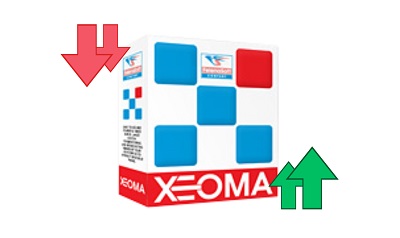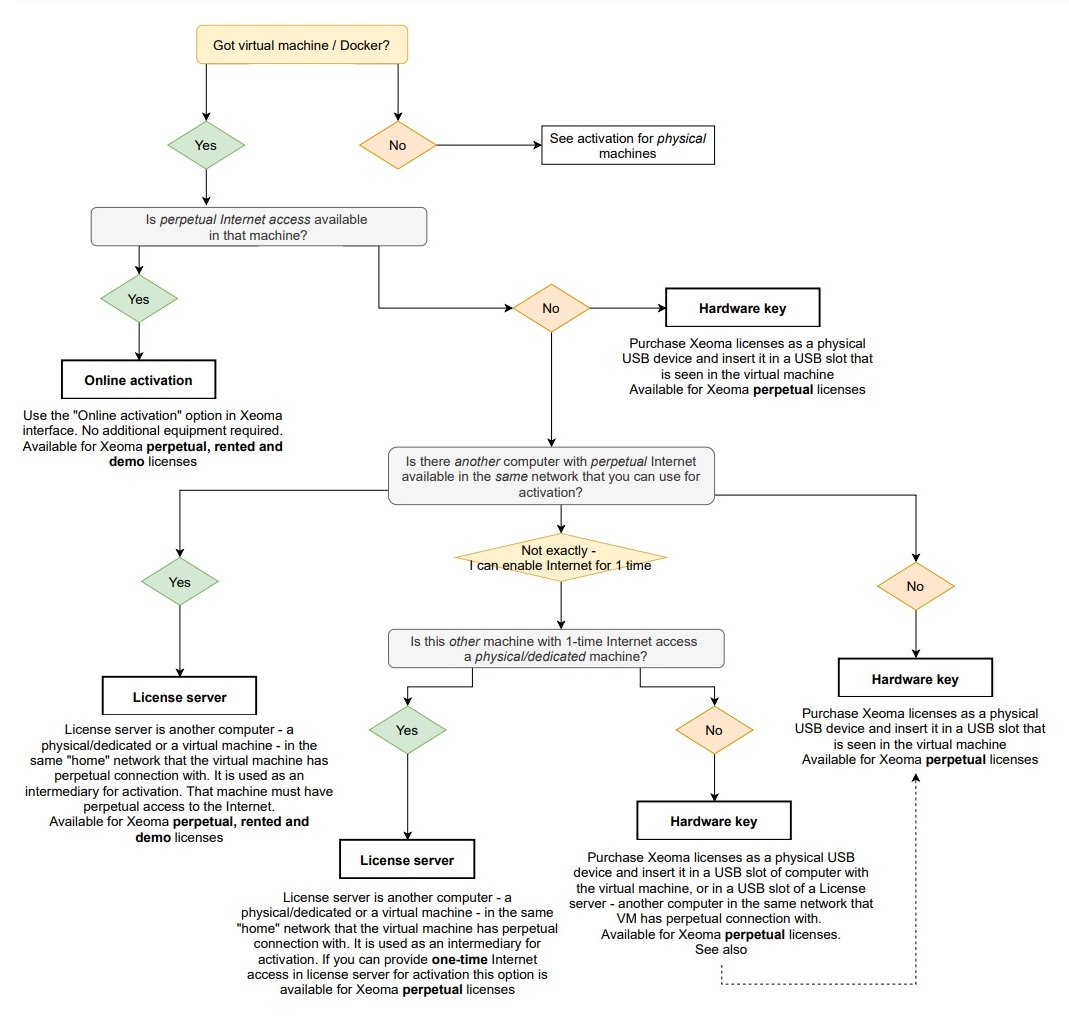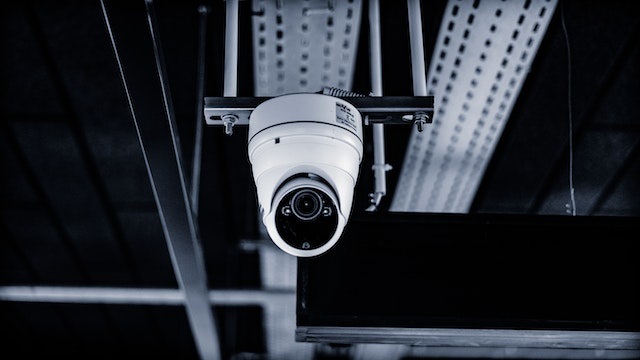What are the disadvantages of Xeoma Video Surveillance Software?
 When choosing a high-quality yet inexpensive video surveillance solution, you have probably come across the Xeoma program, a modern CCTV solution at an affordable price. Although you could find review and feedback on it on the Internet, the majority of them are positive and probably too short – no one has the time for long reviews anymore. And although you could take a ‘leap of faith’ and just start using Xeoma to get to see its advantages and downsides yourself, some people want to know more before they make a decision. Here at Xeoma we believe in transparency so we’d like to address some of common complaints about what might be seen as Xeoma’s disadvantages so that you have full information before you proceed with it.
When choosing a high-quality yet inexpensive video surveillance solution, you have probably come across the Xeoma program, a modern CCTV solution at an affordable price. Although you could find review and feedback on it on the Internet, the majority of them are positive and probably too short – no one has the time for long reviews anymore. And although you could take a ‘leap of faith’ and just start using Xeoma to get to see its advantages and downsides yourself, some people want to know more before they make a decision. Here at Xeoma we believe in transparency so we’d like to address some of common complaints about what might be seen as Xeoma’s disadvantages so that you have full information before you proceed with it.
Disadvantage #1: Software only
As time goes by, manufacturers of software solutions often evolve, and start releasing not only software, but ‘hardware + software’ bundles at some point. Examples of such bundles include branded cameras, NVRs or servers with the software pre-installed there, where physical equipment is appropriate to the software, so that buyers do not have to select it themselves. This is convenient if customers do not have the resources – desire or time – to test and select equipment themselves or are afraid of making a mistake. Instead they are ready to pay extra for a ready-made kit. Xeoma’s downside is that it is currently a software-only product, with no Xeoma-brand cameras, servers or NVRs available – at least from the manufacturer. Instead, you can contact Xeoma resellers and partners, who also often offer CCTV system installation, so they can select suitable equipment for you.
The logic of Xeoma’s developer in this matter is simple: delivery of a physical product will cost the consumer extra money and impose some extra waiting time. On top of that, such products are usually sold with a markup – sometimes quite significant. And sure, there will be a limited selection presented with just a few options out of a million possible ones, so it will not be fitting entirely in many cases. Isn’t it better to make the software universal, i.e. working on almost any off-the-shelf equipment that can be bought in a computer store in your city or nearby? That way you could assemble a DIY video surveillance system more economically and without waiting for delivery. The question remains open.
And yet, not all issues are resolved by the flexible compliance scheme. Manufacturers who make their own cameras often have an opportunity to provide easy connection to Cloud services due to internal P2P-like routing. Such internal routing will be absent if you buy just any camera, even those that Xeoma supports.
Yet, it is worth noting that this concerns the connection of remote cameras only. For client-server connection, however, Xeoma has already implemented a free and secure remote connection method.
And, going back to the matter of connection of remote cameras in Xeoma, Xeoma developers do not leave users entirely in the dark: the suggested solution is putting a device in the network with the camera, which will serve as an intermediary and will redirect camera streams to a remote Xeoma – for example, to Xeoma Cloud or Xeoma Pro Your Cloud server.

Disadvantage #2. Sold mostly online
For the most part, Xeoma software products are sold online on its official website, without intermediaries. Working directly with the manufacturer surely feels more reliable, but there is a downside as well. The thing is that other video surveillance software solutions are usually distributed through a network of partners, which oftentimes means that you can contact such a representative to get consultation, a live demonstration of the solution in action as well as order paid services like selection and installation of hardware and other required equipment.
While Xeoma developer certainly provides unlimited consultations on the program, best equipment choices and troubleshooting, at the end of the day it only sells software. Xeoma does have a partners network but only a few representatives are mentioned on its website. In most cases, however, you will need to contact the manufacturer to learn if you have any local partners nearby – and it’s probable that there isn’t.
Disadvantage #3. Customer care work hours
If you are sick of having to chat with bots instead of a real person, Xeoma is your go-to solution. Xeoma customer service is free even for those who haven’t bought anything yet, and it consists only of real people. On the downside, FelenaSoft’s usual hours are in the East Europe time zone – from 6 a.m. to 9 p.m. UTC time Mon-Fr – and this time difference might mean you have a short stretch of time when you can contact them. Besides, you can reach the company via phone, chat, and messengers only on weekdays. For weekends you are advised to write an email. However, the company claims that VIP clients can get a dedicated support line in more convenient time ranges, even on weekends – for an additional fee. Let us make a remark that technical support is considered secondary, while the first priority of the software is to facilitate uninterrupted work and fail-proof stability, so that urgent help is not required at all.
Disadvantage #4. Too many functions
Xeoma is a multifunctional program and can be used in various scenarios. This has a downside: if the application scenario is fairly simple — for example, simple intrusion detection — then Xeoma’s super features (such as a parking solution or unique visitor tracking, etc.) may seem redundant and distracting. However, in Xeoma’s defense, we can say that, firstly, you can choose a Xeoma edition with a minimum of unnecessary functionality. Secondly, unnecessary modules and menus can be hidden using a free utility for rebranding and customizing Xeoma. And thirdly, Xeoma’s functions can often be used for more than just their intended purpose, so even a feature that seems unneeded at first glance can be used for other purposes. For example, the already mentioned parking solution (the “Parking Spots” module) actually checks the status of a certain area (“occupied” / “free”), so it can even be used to recognize whether someone has taken your favorite spot on the couch. Xeoma makers tried to make it as intuitive as possible, so that no guide are needed, but you will probably need to read lots of Xeoma guides and watch lots of Xeoma videos, and get into how things work in Xeoma.

Just an example of Xeoma guides on some multiple-choice options
|
Disadvantage #5. Too much choice
More than just once we have heard that the Xeoma video surveillance program has way too complicated pricing policies meaning that there are many options to choose from. Although more choice allows to choose a more precisely fitting price for your CCTV solution, at the same time, more options mean more time that will be needed to fully comprehend them and their differences.
Here’s an example: Xeoma has 6 editions, 4 of which are commercial. For each edition, a list of functions that can be used in it and the maximum number of cameras that can be connected is publicly available. Depending on the selected edition, licenses for them can either be purchased on a permanent basis or rented. In addition, so-called Additional modules – features with artificial intelligence (for example, recognizing emotions or a person falling, tracking eye movement, and others) – are available. And on top of that, services like “Repeater”, “Xeoma Cloud” or “Paid Rebranding” can be purchased extra too (each having several packages to choose from, too).
As mentioned above, a larger number of available purchase options allows you to choose what suits you as flexibly as possible, without overpaying (as compared to how much you might have to to overpay for software with just 2-3 options). Besides, Xeoma manufacturer offers help to help you choose the best option for you based on your needs.
Disadvantage #6. Limited access to case studies
In a world where everything is filmed, it is increasingly common to see “behind the scenes” videos produced by various businesses: pet hotels, cleaning services, repair shops, machine-building plants – and, of course, security system installers. Xeoma stands apart in this regard, as it does not publish case studies on its completed projects, with a rare exception. This certainly does have a positive side to it: when you choose Xeoma, you can be sure that the details of your security system will not become public knowledge, for it may be unsafe. But there’s a certain disadvantage, too: there are little (if any) references, case studies of Xeoma projects on the manufacturer’s website. If you want to learn about projects where Xeoma is used in a scenario similar to yours, you can contact the Xeoma developer so that they can ask their customers for permission to share this information – but be prepared that they might not agree. After all, disclosing confidential information can compromise their own system.

Disadvantage #7. Paid updates
We have already mentioned that Xeoma video surveillance software has several commercial editions and – naturally – licenses for them. While Xeoma licenses are themselves perpetual, they do not include lifetime software updates. In Xeoma Starter and Xeoma Lite editions, you can get new versions of the software for 1 month from the license purchase date. Xeoma Standard and Xeoma Pro editions provide more benefits, including at least 1 year during which you can update your Xeoma, counting from the date of purchase (with 3 or 10 years of free updates period options available during purchase).
The manufacturer of Xeoma explains this policy by saying that updates are usually not required, and further explaining that most software is accepted ‘as is’ after being thoroughly tested. In this case, updates can bring unnecessary uncertainty and even threat of something going askew. Therefore, not only updates of software should be disabled in low-risk-tolerance security systems – it is recommended to disable updates on the operating system level too to avoid system updates bringing troubles in the form of security holes, discontinued support for the necessary equipment, etc. And for those who are afraid that some flaw will be discovered in the program over time, the Standard and Pro licenses come with a default 1 year of software updates period during which you will be able to receive new versions of the program; a period during which several new versions of the program with fixes and new features are released.
In conclusion:
It is safe to say that every software has its strengths and weaknesses, advantages and disadvantages. However, as surprising as it is, what seems like a disadvantage to someone is often an advantage to others. The severity of the listed disadvantages varies in each individual case to the point that it may not even be perceived as a disadvantage – especially since the advantages of Xeoma often compensate for all the weaknesses.
Do you know any other disadvantages of Xeoma? Share them with us, and we will add to this article!
August 28, 2024
Read also:
15 reasons to choose Xeoma over other VSS